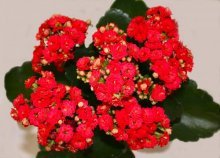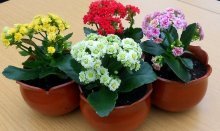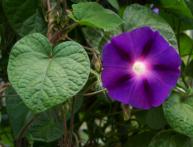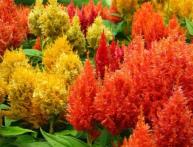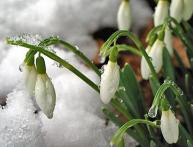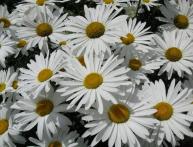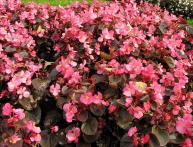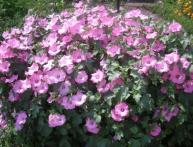Kalanchoe blooming: care and cultivation at home
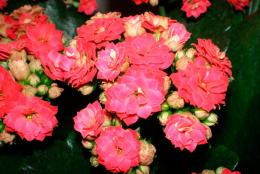
In many homes you can find plants from the genus Kalanchoe of the Crassulaceae family. The types of Kalanchoe that are found in indoor floriculture are unpretentious, like most representatives of this plant family. However, there are periods when the plant requires some attention and care from gardeners.
Kalanchoe blooming needs some attention and care when growing as a potted plant. Some Kalanchoes bloom very beautifully. The flowering period can be repeated by creating a number of conditions for the plant.
Content:
- Conditions for growth and flowering of Kalanchoe
- How to plant Kalanchoe
- How to care for blooming Kalanchoe
- How to help Kalanchoe bloom
Conditions for growth and flowering of Kalanchoe
A description of the plant's living conditions in its natural environment will help you decide on a place in the room for a pot of Kalanchoe. And Kalanchoe grows in fairly hot conditions in the tropics and subtropics. Therefore, temperature will always come first. Three types of this plant are most often grown indoors:
- Kalanchoe pinnate
- Kalanchoe Degremona
- Kalanchoe Blossfeld
The first two plants are credited with medicinal properties. All three species are capable of blooming indoors with varying degrees of decorativeness. However, the most beautiful in blooming state is Kalanchoe Blossfeld. This plant was described relatively recently - in 1934.This type of Kalanchoe has compact, beautiful bushes with a height of 20 cm to 30 cm, while other species can grow in pots up to 0.6 and even 0.9 m.
The color of the inflorescences of Kalanchoe Blossfeld cultivated indoors can be very different. There are specimens with pink, orange, and yellow inflorescences.
The flowers of wild Kalanchoe Blossfeld are colored red. It is this color palette that makes Kalanchoe Blossfeld very popular among gardeners. The flowering period is several months. As a rule, Kalanchoe blooms from late winter until mid or late spring. Initially, the homeland of all Kalanchoes was Africa and Madagascar.
Subsequently, they acclimatized well in other areas with warm climates, including Asia, Australia, New Zealand, and America. All Kalanchoes are succulent plants that can store and retain moisture. The word Kalanchoe is translated as thick skin, which prevents the evaporation of water.
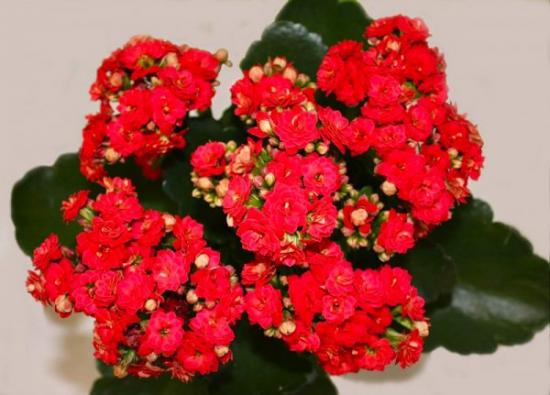
When choosing a place for a pot of Kalanchoe, it is advisable to give preference to southern windows when creating a little shade in the hot season. This is necessary in order to protect the leaves from burns. A room with windows oriented east or west is also suitable for a flower. In winter, Kalanchoe needs an additional light source. If the daylight hours are too short, the plant will lose its decorative effect.
The total time of continuous illumination should not be less than 12 hours. Otherwise, the stems at the bottom will lose leaves, remain bare and begin to stretch upward excessively. In summer, Kalanchoe develops well at + 25, in winter - at + 12. Air humidity in the room is not at all important at growing Kalanchoe.However, in summer the flower responds well to water procedures in the form of sprinkling.
How to plant Kalanchoe
Flowering Kalanchoe can be propagated by seeds. To do this, at the beginning of spring, the seeds are laid out on well-moistened soil and covered with glass. Until the sprouts appear, keep the pot in a fairly dark place. The glass is lifted two to three times a day for ventilation. During the summer, young Kalanchoes from seeds are pinched twice to form a bush. In autumn the plant is ready to be transplanted into a pot.
All types of Kalanchoe can be propagated from leaf or stem cuttings. In addition, Kalanchoe pinnate and Kalanchoe Degremona form a fairly large number of children along the edges of the leaves, which immediately begin to grow when they fall to the ground. To root the children, it is enough to place leaf or stem cuttings in a bowl with damp sand, covering them with a glass jar.
During the rooting period, it is important to keep the plant at a temperature of + 25 degrees during the day and + 18 degrees at night. After the roots appear Kalanchoe can be replanted in a pot with soil. You can try keeping the stem cuttings in a glass of water until roots appear. To grow Kalanchoe, you can use ready-made soil for succulent plants or create a soil mixture yourself.
To do this, just mix in equal parts:
- humus
- sand
- sod land
- leaf soil
Since Kalanchoe is quite responsive to the nutritional value of the soil, you can add a little bone meal for every 10 kg of mixture. Since this is a fairly strong organic fertilizer, you will need no more than one heaped tablespoon of it.To prevent stagnation of water, a layer of expanded clay or broken brick is poured onto the bottom of the pot. After this, the pot is filled with soil and the young plant is planted in it. seedling Kalanchoe. As a rule, with proper care, the plant blooms within a year.
How to care for blooming Kalanchoe
The plant is responsive to watering. However, it can die if there is a systematic excess of water. Therefore, the frequency of watering is regulated by the drying of the earthen clod. In summer, in addition to watering, the plant must be sprayed and given a warm shower. In winter, such procedures are not carried out. Moisture on the leaves at this time can worsen the appearance of the Kalanchoe.
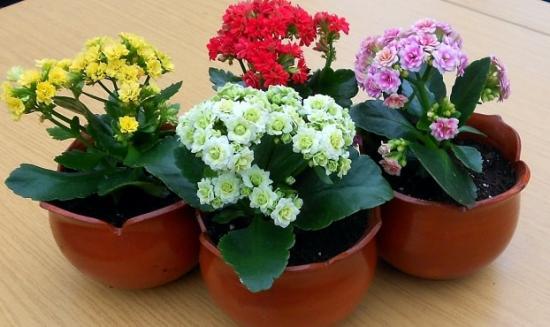
In the summer, pots with Kalanchoe are recommended to be placed on loggias and balconies. You can keep them there until the temperature begins to drop at night to +10 degrees. To ensure that flowering Kalanchoe retains the ability to form new flowers for as long as possible, old flower stalks are cut off.
And so that as many flower stalks as possible are formed, shoots lightly pinch. During the period of active growth, the plant needs regular feeding twice a month. Any liquid mixture for succulents is suitable for this. Unfortunately, it happens that all the conditions seem to be created, but the Blossfeld Kalanchoe does not bloom.
How to help Kalanchoe bloom
It turns out that in order for Kalanchoe to begin to bloom, it needs to somewhat limit the amount of sunlight. Kalanchoe blooms during short days. Here a simple technique will come to the aid of the gardener, which will help reduce daylight hours without changing either the place where the pot is located or the conditions in which the Kalanchoe grows.
You need to glue a cone out of cardboard or thick paper and cover the plant with this cap for several hours a day. If you need Kalanchoe to bloom not only in spring, but also at other times of the year, then such a technique, carried out for four to five weeks, will help it bloom a second time.
Video about growing Kalanchoe:

